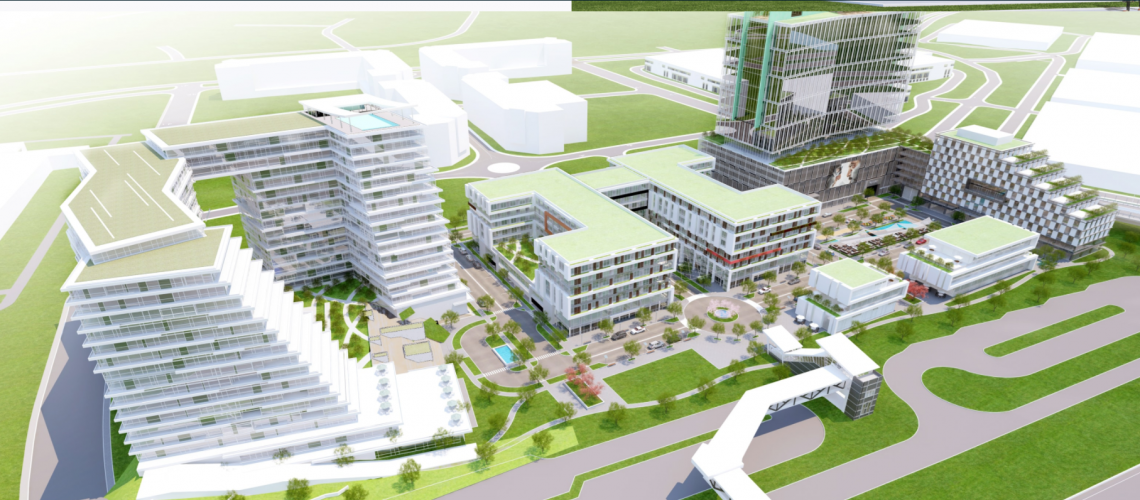As the Internet of Things (IoT) continues to grow, more and more U.S. cities will work with private companies and organizations to improve the quality of life for residents through the use of technology. While San Jose, New York City and Dallas are some of the larger cities to create these initiatives and begin integrating various technologies across each infrastructure, the Washington, D.C. area will soon be home to a $700 million Smart City development, right in our own backyard.
Gramercy District is a fully integrated, hyper-connected campus with luxury residential, coworking, education, high-rise office, hotel and retail space on a 24-acre site located in Ashburn, Virginia, integrating a mixed-use development with artificial intelligence and machine learning.
As the first greenfield smart city in the D.C. area, and one of the first in the country, we are excited to see how this development will make an impact and be received by the community. Here are three things we expect to see from this new smart city.
Adaptability
One major challenge for urban communities is ensuring that citizens’ fundamental needs are being met. Systems such as water, food, transportation, power and even healthcare are all interdependent and require thoughtful integration and optimization when building a smart community from the ground up. Add in unexpected events such as a power outage, construction carriers or severe weather and a beautifully constructed city can become ill-functioning quite quickly.
That’s why IoT data is so important, to provide real-time data, integrate relevant data sets and models to identify normal operating metrics, various asset conditions and vulnerabilities, and flag risks. IoT data allows smart cities to quickly adapt to fix unforeseen obstacles and adapt to the needs of its inhabitants, using efficient artificial intelligence (AI) to manage large amounts of data quickly.
Simple replication
The replication of proven smart city solutions has become a common trend both in the U.S. and around the globe. Different coalitions are gathering together commitments addressing the development of smart city strategies and plans in order to facilitate an experience exchange on the development processes, applied methods and tools for upscaling and replication.
IoT and smart city spaces are a $1.5 trillion to $2 trillion market. Gramercy District will serve as a “smart city in a box” platform that can be replicated across the country. Through this process, successes and room for improvement can be measured and applied to future projects.
Create and experiment in-house
The smart city can essentially become an immense laboratory to test and analyze various projects and methods. Different cities are currently carrying out intelligent urban innovation experiments, linked to environmental protection, the development of new digital applications or services or green living. One of the roles of smart cities is to more effectively manage the mobility of people, objects and goods, making it a perfect playing field to examine the type of technical and social experiments carried out to achieve this objective.
Additionally, the Gramercy District development will include the launch of a coworking business accelerator run in partnership with the Center for Innovative Technology, which will bring in companies that advance technology around real estate development, where they can run test projects on their own smart city.
To read about a recent Vidsys smart city project, click here.






![Vidsys Enterprise 2020R2: improved video replay controls, auto reporting + more [release notes]](https://vidsys.com/wp-content/uploads/2020/05/Spanish-Access-Control-Functions.png)
